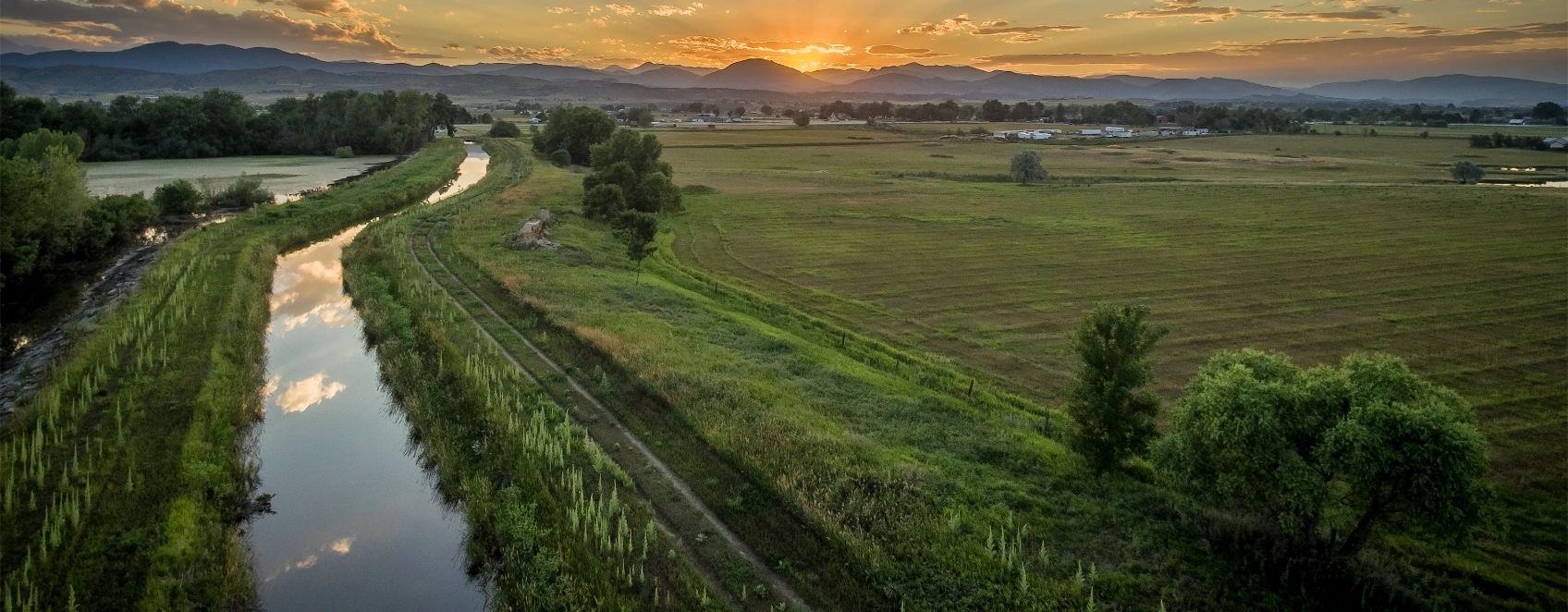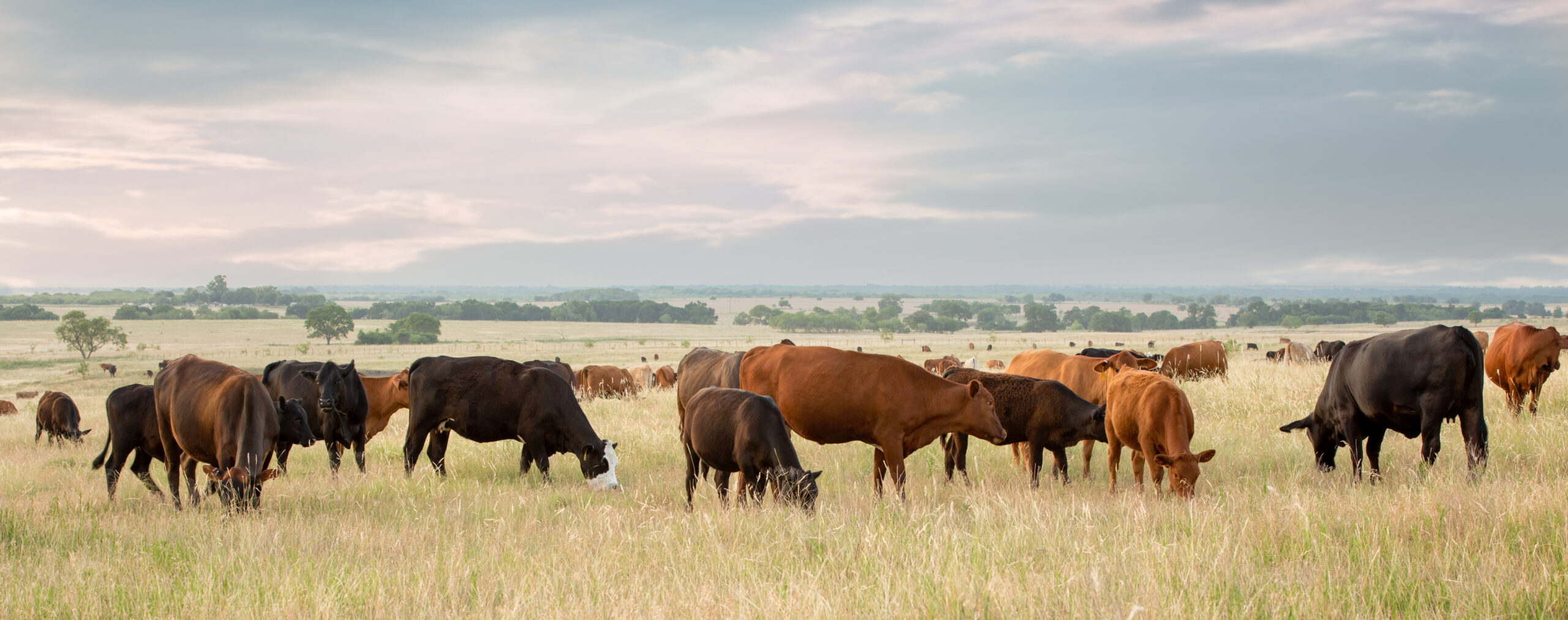
Executive Summary
The 2024 Trump policy platform, emphasizing deregulation, tax cuts, domestic energy independence, and aggressive trade policies, is likely to create a ripple effect across the ranchland sector. This commentary evaluates the implications of these policies on key drivers of ranch economics, including land values, agricultural income, and supplemental income opportunities. The discussion incorporates insights on long-term trends, commodity market dynamics, and potential changes in investor sentiment.
Land Values: Trends and Policy Impacts
Long-Term Demand for End-Products
The demand for end-products like beef, lamb, and bison remains a crucial driver of ranchland value. Trump’s trade and regulatory policies are set to influence this demand in significant ways:
- Support for Domestic Beef Markets: Trump’s protectionist stance, including tariffs on imported beef, aims to bolster domestic cattle prices by reducing competition from foreign suppliers. This could drive higher demand for U.S.-produced animal proteins, benefiting ranchers focused on sustainable beef production. However, retaliatory tariffs from major trading partners may introduce volatility, impacting export markets and income predictability.
- Potential Influence of FDA Leadership: Robert F. Kennedy Jr. has been mentioned as a possible pick for FDA head. His pro-regenerative agriculture stance, including opposition to glyphosate and large-scale commercial farming, may shift consumer preferences towards sustainably produced, chemical-free meat. This shift could increase demand for grass-fed and regenerative ranch products, positively affecting land values for operations aligned with these principles.
Acreage Shrinkage and Land Use Trends
- Accelerated Conversion to Alternative Uses: Long-term trends indicate shrinking acreage for ranchland due to conversions to cropland, residential construction, and energy development. Trump’s emphasis on expanding domestic energy production, particularly renewables like wind and solar, could heighten this trend. While clean energy projects enhance land value through leasing opportunities, increased development pressure may reduce the availability of open grazing land, tightening supply and pushing up prices for high-quality ranchland.
- Impact of Deregulation: Trump’s platform includes a significant rollback of land-use restrictions, which may incentivize development projects, particularly in resource-rich states like Texas and Wyoming. While this deregulation could increase land value through enhanced development potential, it also poses risks to long-term conservation efforts, potentially reducing the attractiveness of certain properties for eco-focused investors.
Tax Policy and Investment Appeal
- Estate Tax Relief: Trump’s proposed extension of estate tax cuts is expected to ease the generational transfer of ranch properties. This could reduce the financial burden on heirs, allowing more families to retain their ranchland rather than being forced into sales to cover tax liabilities. This increased stability in landownership may decrease the supply of properties hitting the market, supporting land values over the long term.
- Comparative Tax Disadvantage: The proposed broader tax cuts in Trump’s 2024 agenda could diminish the relative appeal of ranchland as an investment asset. While ranchland currently benefits from unique tax incentives like accelerated depreciation (e.g., Section 180) and conservation easements, sweeping reductions in capital gains taxes and corporate tax rates for other asset classes may outweigh these benefits. As a result, traditional and alternative assets such as equities, commercial real estate, and private businesses may become more attractive to investors seeking tax efficiency, potentially diverting capital away from ranchland.
Agricultural Income: Commodity Market Dynamics
Livestock Prices and Market Conditions
The profitability of ranch operations is closely tied to livestock prices, which are influenced by supply-demand dynamics, tariffs, and consumer preferences:
- Tariff Policies Supporting Domestic Prices: Trump’s reintroduction of tariffs on imported beef is designed to protect domestic producers. This could drive up U.S. cattle prices, benefiting ranchers who focus on local markets. However, the risk of trade disputes and retaliatory tariffs from key partners like Canada and Mexico could disrupt export channels, introducing uncertainty into income streams for ranchers dependent on international sales.
- Shift Towards Sustainable Production: The potential appointment of RFK Jr. as FDA head signals a shift towards favoring regenerative and chemical-free agriculture. This could strain supply chains reliant on large-scale, industrial farming methods, pushing demand towards sustainably produced beef. Ranchers practicing regenerative grazing may find themselves at a competitive advantage, able to command premium prices in a market increasingly wary of chemical-laden inputs like glyphosate.
Rising Input Costs: Labor as a Key Constraint
- Labor Shortages from Stricter Immigration Enforcement: Trump’s strict immigration policies are likely to exacerbate labor shortages in the agricultural sector, particularly in states like California, Texas, and Florida, which represent over a third of U.S. ranch operations. Limited access to lower-cost migrant labor could increase wage expenses, affecting the profitability of labor-intensive ranch activities. Ranchers may need to adapt by investing in automation or altering grazing strategies to manage costs effectively.
- Increased Feed Costs: Input costs such as hay for winter feed may also rise if energy prices remain high due to shifts in domestic production. Higher fuel prices can impact the cost of harvesting and transporting feed, further straining ranch profitability during the winter months.
- Technological Innovation: A fringe impact of Trump’s immigration policy could be an acceleration in technological innovations in the agricultural segment, such as precision ag, sensor and drone technology, and digital fencing to name a few. This could create benefits to producers willing to be early adopters of these new technologies, providing advantages in a rising input cost environment.
Supplemental Income: New Opportunities and Risks
Clean Energy Leases: Positive Outlook
- Renewable Energy Development: Trump’s focus on domestic energy production includes an emphasis on expanding clean energy projects like wind and solar. Ranches with suitable land for renewable energy installations could see a boost in value and receive stable, supplemental income from long-term leasing agreements. This aligns well with conservation-focused operations that prefer sustainable land use over traditional energy extraction.
Conservation Credits and Mitigation Banking
- Enhanced Role for Private Conservation Efforts: With the potential scaling back of federal conservation funding, private sector partnerships may become increasingly important. Ranchers engaged in land mitigation banking and biodiversity projects could benefit from new revenue streams, particularly as developers seek to offset environmental impacts through conservation credits. This shift could provide significant financial incentives for ranches that invest in ecosystem health and habitat restoration.
Other Considerations: Generational Transfers and Asset Comparisons
Impact on Generational Transfers
The proposed extension of estate tax relief is likely to increase the number of large ranch owners transitioning properties to the next generation. By reducing the financial burden associated with estate taxes, this policy could help keep family-owned ranches intact, avoiding forced sales and preserving the land for continued agricultural use.
Comparative Appeal of Ranchland vs. Other Assets
While Trump’s tax cuts could make other assets more attractive, ranchland retains unique tax advantages that may sustain its appeal for certain investors. Accelerated depreciation, conservation easements, and the potential for supplemental income from clean energy and conservation projects provide a strong case for continued investment in ranch properties, even in a shifting tax landscape.
Conclusion
Trump’s 2024 policy agenda presents both opportunities and challenges for the ranching community. Policies aimed at deregulation, domestic energy expansion, and tax relief are likely to drive up land values and create new income streams. However, increased labor costs and market volatility from protectionist trade measures may pose risks to traditional ranch operations. Ranchers and investors must adopt a proactive strategy, balancing core livestock activities with diversified income sources like clean energy leases and conservation credits to maximize returns and navigate the evolving landscape.
For ranch operators, the key to success lies in adaptability and strategic planning, leveraging both policy shifts and market dynamics to optimize economic performance and ensure long-term sustainability.
SOURCES
Unless otherwise noted, with respect to private equity information, data sourced through: PitchBook Q3 2024 US PE Breakdown and PitchBook Q3 2024 European PE Breakdown.
Unless otherwise noted, with respect to venture capital information, data sourced through: Q3 2024 PitchBook-NVCA Venture Monitor.
Unless otherwise noted, with respect to secondaries information, data sourced through: PJT Partners Secondary Market Insight Q3 2024 and Preqin historical fundraising data for secondaries and direct secondaries funds downloaded on 10/18/2024.
IMPORTANT INFORMATION
Copyright© Ranchland Capital Partners, LLC 2024. All rights reserved.
This material is proprietary and may not be reproduced or distributed without Ranchland’s prior written permission. It is delivered on an “as is” basis without warranty or liability. Ranchland accepts no responsibility for any errors, mistakes, or omissions or for any action taken in reliance thereon. All charts, graphs, and other elements contained within are also copyrighted works and may be owned by Ranchland or a party other than Ranchland. By accepting the information, you agree to abide by all applicable copyright and other laws, as well as any additional copyright notices or restrictions contained in the information.
The views and information provided were created at various dates in time and unless otherwise indicated, are subject to frequent changes, updates, revisions, verifications, and amendments, materially or otherwise, without notice, as data or other conditions change. There can be no assurance that terms and trends described herein will continue or that forecasts are accurate. Certain statements contained herein are statements of future expectations or forward-looking statements that are based on Ranchland’s views and assumptions as of the date hereof and involve known and unknown risks and uncertainties that could cause actual results, performance, or events to differ materially and adversely from what has been expressed or implied in such statements. Forwardlooking statements may be identified by context or words such as “may, will, should, expects, plans, intends, anticipates, believes, estimates, predicts, potential, or continue” and other similar expressions. Neither Ranchland, its affiliates, nor any of Ranchland’s or its affiliates’ respective advisers, members, directors, officers, partners, agents, representatives, or employees, or any other person, is under any obligation to update or keep current the information contained in this document.
This material is for informational purposes only and is not an offer or a solicitation to subscribe to any fund and does not constitute investment, legal, regulatory, business, tax, financial, accounting, or other advice or a recommendation regarding any securities of Ranchland, of any fund or vehicle managed by Ranchland, or of any other issuer of securities. No representation or warranty, express or implied, is given as to the accuracy, fairness, correctness, or completeness of third-party sourced data or opinions contained herein, and no liability (in negligence or otherwise) is accepted by Ranchland for any loss howsoever arising, directly or indirectly, from any use of this document or its contents, or otherwise arising in connection with the provision of such third-party data.
Featured Articles

Using Heavy Tail Optimization to Evaluate the 2023 Milliman Study Allocation

The Relationship between Cattle, Sustainability, and Ecosystem Function

Why Now?

Hunting and Conservation: An Integral Relationship

National Ranchland Property Index® TR
